#mongolic
Text






Иллюстрации "Хозяин Ольхона". На основе бурятского фольклора
Illustrations "The owner of the Olkhon Island". Based on Buryat folklore
Illustrator G. A. W. Traugot
Иллюстратор Траугот Г. А. В.. Сказки Прибайкалья: бурятские сказки, тофаларские сказки, якутские сказки
#mongolic#non-russian#indigenous russian#indigenous russia#Buryatia#Бурятия#Buryats culture#Культура Буряты
41 notes
·
View notes
Text



Buryat people of Siberia
#buryat#buryatia#siberia#russian#buryat traditional dress#mongolic#people#photography#flickr#own post
53 notes
·
View notes
Text
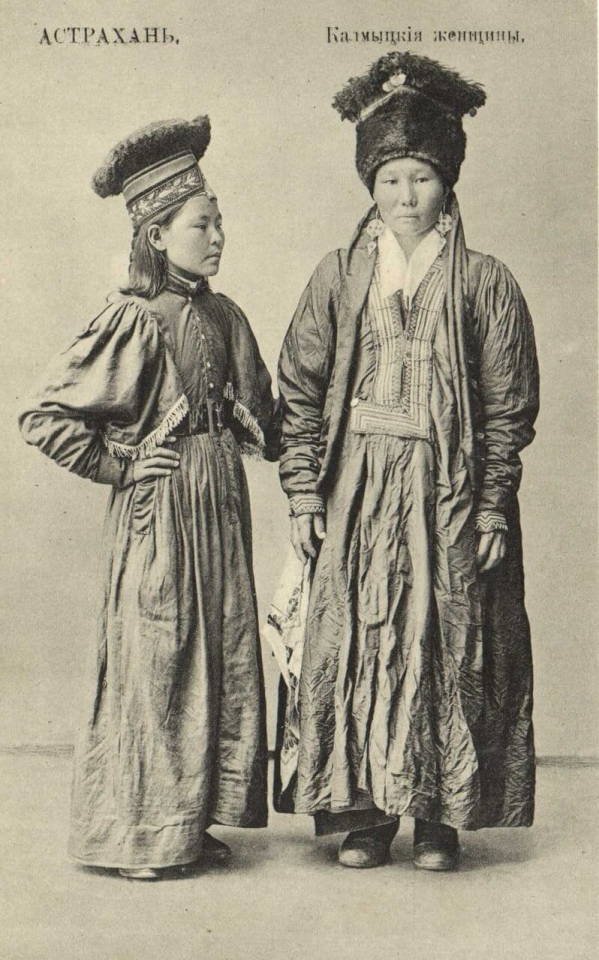
Kalmyk women
7 notes
·
View notes
Text
Notes about the differences between Mongolic and Turkic people:
Mongolic people are believed to have originated in the region around the present-day Mongolia, while Turkic people are believed to have originated in the region around the Altai Mountains, which spans across present-day Mongolia, China, Kazakhstan, and Russia.
Mongolic people speak Mongolic languages, which are distinct from Turkic languages spoken by the Turkic people. Mongolian, Buryat, Kalmyk, and Oirat are some of the prominent Mongolic languages, while Uzbek, Kazakh, and Kyrgyz are some of the prominent Turkic languages.
There are also physical differences between Mongolic and Turkic people but I don't want to go into great detail about it incase I run the risk of it sounding really stereotypical, but Mongolic people tend to have an East/North East Asian appearance and Turkic people a bit less so.
Historically, both groups practiced shamanism, animism, and Buddhism. However, since the 10th century, Turkic people have predominantly embraced Islam, while Mongolic people have predominantly embraced Tibetan Buddhism.
Mongolic people have a long and rich history that dates back to the Mongol Empire. The Turkic people also have a long and complex history that includes the Turkic Khaganate, the Seljuk Empire, and other powerful empires.
Genetically speaking, The Mongolic and Turkic people have distinct genetic profiles that reflect their unique histories and migrations. Mongolic people have a higher frequency of the C3 haplogroup, which is associated with the ancient Scythian people of Central Asia, while the Turkic people have a higher frequency of the R1a haplogroup, which is associated with the ancient Indo-European people of Central Asia and Europe.
I believe that it is problematic to say that Turkic and Mongolic people are the same or interchangeable terms because they are two distinct ethnic groups with their own unique languages, cultures, and histories.
For one, it erases the cultural diversity of these two groups. By treating Turkic and Mongolic people as interchangeable terms, I believe it erases the rich cultural diversity of each group. This can lead to stereotypes and misconceptions being created about these groups and their traditions.
Two, it's... Pretty inaccurate. Turkic and Mongolic people have distinct genetic profiles, linguistic structures, and cultural practices. Treating them as interchangeable terms ignores these differences.
Furthermore, it's just disrespectful to the histories of these two groups. Both the Turkic and Mongolic people have long and complex histories that are unique to their own cultures.
I am not denying that Mongolic and Turkic people have a long and shared history, and allied and intermarried with one another and share cultural similarities but I just wanted to note the differences between the groups. Mongolic and Turkic groups are incredibly diverse and in of themselves so to say that Mongolic and Turkic people are just... So similar that they can be said to be the same thing is really inaccurate. That's like if I said Russia and Ukraine are the same countries because of the cultural, linguistic and generic similarities.
#Mongolia#mongolian history#mongolic#Mongolic people#History#Asian historic#Turkic#Turkic people#Turkic history#Notes
21 notes
·
View notes
Text

Siberian languages in the 1600s
20 notes
·
View notes
Text

when the butchez trans their gender
#my art#nonsexual nudity#butch#lesbian#t4t#butch4butch#my ocs#munhetuya#sergelen#munserg#north asian artists#buryat#mongol
971 notes
·
View notes
Text
*In the NRC Groupchat*
Malleus: @Everyone
Malleus: @MC
*Everyone is online.*
Jade: Oya?
Kalim: Hello guys!
Jamil: Hello.
Riddle: What's going on, Malleus-senpai?
Azul: It seems we are here to witness something.
Everyone (except Malleus): ^
Sebek: @MC Waka-sama has separately mentioned you! Where are you?!
Ace: They'll be here in a moment. They need to finish Professor Trein's project. It's due today.
Deuce: Yeah.
Sebek: Hmph! Is that project more important than Waka-sama?!
Lilia: Sebek.
Ace: MC wanted to say that of course not, but they need to submit this because they don't want to be held back.
Riddle: I agree. Education is important.
Vil: Anyway...
Vil: Is there something you need to tell them, Malleus?
Malleus: Yes.
Malleus: I can start now.
Malleus: They can read this later.
Malleus: @MC
Malleus: In this vast universe
Malleus: Among the many stars
Malleus: In a single vast blue planet
Leona: I'm starting to feel the cringe.
Idia: Fr fr
Ortho: Brother...
Lilia: Can you not interrupt Malleus? :)
Cater: XD
Ruggie: Shishishi XD Leona is just bitter.
Leona: What did you say?
Ruggie: Wrong sent.
Vil: Malleus, you should continue.
Malleus: ...
Malleus: My small feelings of love would reach
Malleus: to that tiny island where you are
Ace: Damn
Ace: @MC He's criticizing the dorm you're in
Riddle: Off with your head, Ace!
Ace: Wh-What? I'm not doing anything!
Floyd: Crabby~
Ace: Okay! Okay! I'll shut up!
Deuce: Suits you well.
Ace: Shut up!
Malleus: Time had passed since I met you
Malleus: And the letters adorning our feelings are also increasing
Everyone: !!!
Kalim: OMG!!!! YOU TWO ARE DATING?!!
Lilia: *happy emoji*
Silver: Ah. That's why I've been seeing you writing letters every week.
Leona: I knew it. Cringe.
Rook: Non! That is such a sweet gesture!
Idia: Yeah. For you. Because you're a romantic.
Azul: This is interesting. Don't you think, @Jade ?
Jade: Yes. ^^
Floyd: But why though~?
Jamil: Maybe both of them are trying to keep it a secret.
Ace: It's not effective then.
Ace: Especially when MC gets a hickey after leaving Diasomnia.
Riddle: ACE!
Ace: What is it this time?!
Trey: Ace, I would appreciate it, really, if you would keep quiet for a while.
*Ortho muted Ace.*
Ruggie: Lol.
Ortho: Please continue, Malleus Draconia.
Malleus: ...
Malleus: Someday, they will echo unnoticed in our hearts
Malleus: At times violently, at times sorrowfully
Malleus: They will echo faraway, into the far-off distance
Malleus: This tender song will change world
Malleus: Look now
Malleus: the person who you cherish
Malleus: Is right beside you
Leona: 😒
*Ortho muted Leona*
Lilia: Thank you, Ortho! ^^
Ortho: You're welcome! ^^
Malleus: I wish for this to reach just you
Malleus: Resonate, my song of love
MC: ...
MC: @Malleus stop
Malleus: ...
Everyone: ...
Malleus: Why?
Sebek: HUMAN! YOU'RE MAKING THE YOUNG MASTER CRY!
Silver: Sebek.
*MC has started a group video call.*
*Everyone has joined the group video call.*
*MC smiles at the camera*
MC: You beat me to it, Malleus.
MC: *continues the song Malleus shared in the chat*
Look now...
Resound, my song of love
You come to realise,
that even when the two of us should walk a dark road
The moon would illuminate our days
Never letting go of your hand I've clasped
Our feelings are strong
and we vow it's for all eternity
In the depths of eternity
I will surely say the exact same words
with my feelings still the same
But those words will never cease
they will turn into tears
Then to joy
Unable to speak
I'll just embrace you
Look now
the person who you cherish
Is right beside you
I wish
for this to reach just you
Resonate, my song of love
Look now...
Resound, my song of love
If it's a dream don't wake me up
If it's a dream don't wake me up
the time I've spent with you
Shall become a star
shining eternally
Look now
The person who you cherish
is right beside you
I wish
for this to reach just you
Oh resound, my song of love
Look now
the person who you cherish
Is right beside you
I wish
for this to reach just you
Resonate, my song of love
Look now...
Look now!
MC: *catches their breath then laughs*
Malleus: ...
*Malleus hung up*
Everyone: Where did he go?
Malleus: *then appearing with MC* *throwing himself to them*
MC: Oof!
Malleus: I love you.
Lilia: *sniffles* I'm so glad I get to see this.
Sebek: Waka-sama... I'm so happy for you... *holding back his tears*
Silver: Please excuse me for interrupting, but you might want to end the call first.
Floyd: Eh~ But we want to watch~
MC: Haha, you wouldn't "like" to watch us, Floyd.
Malleus: *looks at the camera and reaches to end the video call*
*Back in the groupchat*
Ruggie: I bet you 30 madols, they're being lovey-dovey right now.
Idia: You didn't have to bet for something like that.
Ortho: They're kissing on the grounds of Ramshackle dorm.
Everyone: 😶
#twisted wonderland#twst mc#twst malleus#twst nrc#【Original PV 】Little love song/ MONGOL 800 (cover) by Amatsuki
458 notes
·
View notes
Text
Characters reconnecting with their ancestral cultures in an interplanetary setting
@pixiedustandpetrichor asked:
Hi! I am writing a novel with three main female characters in an interplanetary setting. They grow up as orphans in an Irish-coded country and as children are mostly exposed to solely that culture, but they leave after becoming adults.
Character A is Tuareg-coded, B Mongolian-coded, and C is Germanic-coded. It isn’t central to the story, but I would like them to get in touch with/learn more about their ancestral cultures, especially in terms of religion. A does this by actually visiting the planet her parents came from, but B and C do not.
What can I do to depict their relationships with said cultures and their journey to reconnect with them? Would it be realistic for each of them to have different mixed feelings about participating in these cultures and for them to retain some sense of belonging to the culture they grew up in as well? Thank you for your time.
Hello, asker! WWC doesn’t have Tuareg or Mongol mods at the moment, so we're not able to speak to the specifics of cultural and religious reconnection for these particular groups. Still, I want to take this opportunity to provide some general context and elements to consider when writing Tuareg-coded characters, or other characters from groups that have experienced colonization in the real world. My fellow mods will then share thoughts about cultural reconnection in general and with respect to Germanic heritage in particular.
Drawing inspiration from groups that have experienced colonization
As you’re probably aware, the Tuareg are an ethnic group indigenous to North Africa. As with many indigenous groups, they have experienced colonization multiple times over the course of their history. Colonization often leads to the loss or erasure of certain aspects of culture as the colonized people are pressured to conform to the culture of the dominant group. In many cases, it’s near impossible to say what the ancestral culture of a colonized group was prior to colonization.
When coding a fictional culture based on a group that was colonized in the real world, it's important to ask questions about:
Which aspects of culture you're portraying
Where these aspects come from
Whether you're ready to tackle their implications for the world you're building
It’s not necessarily wrong to use elements of coding that draw from cultural aspects influenced by colonization. As I said, it can be very difficult, even impossible, to portray a “pure” culture as it would have been had colonization not occurred–because we simply can’t know what that alternate history would look like, and because so much has been lost or intentionally suppressed that the gaps in our knowledge are too wide to breach. But it’s important to be aware of where these cultural elements are coming from.
Where is your coding coming from and what are the implications?
For example, while the Tuareg today are majoritarily Muslim, this was not the case prior to the Arab conquest of North Africa. Some elements of Tuareg culture today, such as tea ceremonies, are derived from the influence of Arab and Muslim culture and likely did not exist prior to the 20th century. As you’re developing the culture of the Tuareg-coded group in your fictional setting, you have to decide whether to include these elements. There is no right answer–it will depend on what you’re trying to do and why.
Is your setting in our far future, in which case we can assume your Tuareg-coded group is distantly related to today’s Tuareg?
In that case, they will probably have kept many cultural aspects their ancestors acquired through their interactions with other cultures around them–including cultural groups that colonized them. They may–let’s build hopeful worlds!–have reclaimed aspects of their ancestral culture they’d been forced to abandon due to colonization. They may also have acquired new aspects of culture over time. This can be very fun to explore if you have the time and space to do so.
I would recommend speaking with Tuareg people to get a better grasp of how they see their culture evolving over the next however many centuries or millennia, what they wish to see and what seems realistic to them.
Alternatively, maybe your setting is a secondary world unrelated to ours and you only want to draw inspiration from the real-world Tuareg, not represent them exactly. In that case, you need to decide which period of history you’re drawing from, as Tuareg culture is different today from what it was 50 years ago, and different still from 200 years ago or 1000 years ago. You’ll need to research the historical period you’re choosing in order to figure out what was happening at that time and what the cultural influences were. If it’s pre-colonial, you’ll probably want to avoid including cultural elements influenced by colonization from groups that arrived later on.
Finally, if the time period you’re drawing from is post-colonial:
Are you planning to account for the effects of colonization on Tuareg culture?
Will you have an in-world equivalent for the colonization that occurred in real life?
For example, will the Tuareg-coded characters in your world be from a nomadic culture that was forced to become sedentary over the years and lost much of their traditions due to colonial pressure to conform?
Where did this pressure come from in your world–is it different from what happened in ours? If so, how different? And what are the consequences?
Writing about colonization can be quite the baggage to bring into a fictional setting. I’m not saying it can’t be done, but it will certainly require sensitivity and care in portraying it.
In summary: think it through
I’m not saying all this to discourage you, but to point out some of the considerations at play when drawing inspiration from a real-life culture that has experienced colonization. Similar challenges arise for coding based on any other indigenous group in the world.
My advice to you, then, is to first sit down and decide where and when in history your coding is coming from, and what you’re trying to achieve with it. This will help you figure out:
which elements of contemporary Tuareg culture are pertinent to include
How much your coding will be influenced by the Tuareg’s real-life history
To what extent that will inform the rest of the world you’re creating
This, in turn, may help in deciding how to portray your character’s reconnection journey.
Again, I am not Tuareg and this is by no means meant to be an exhaustive list of considerations for writing Tuareg-coded characters, only a few places to start.
If any Tuareg or Amazigh readers would like to chime in with suggestions of their own, please do. As always, please make sure your comments adhere to the WWC code of conduct.
- Niki
Pulling from diaspora and TRA narratives of cultural reconnection
Marika here: This ask plotline could also pull directly from diaspora and TRA narratives of cultural reconnection. Many diaspora and TRA cultural reconnection stories are, in effect, about navigating the difficult process of resuscitating, or renewing ties to culture using limited resources in environments that often lack necessary cultural infrastructure or scaffolding.
See this question here to the Japanese team for suggestions of how to handle such a storyline in a similar sci-fi setting.
More reading: Japanese-coded girl from future
-Marika
Reconnecting with German heritage
Hi, it’s Shira. I’m not sure whether German-Jewish counts as Germanic for the purposes of your post but since German Jews were more assimilated than other Ashkies, Germanness does feel real and relevant to my life (especially because my father worked there for approximately the last decade of his life.) NOTE: when I see “Germanic” vs German I think of cultures from 1500 years ago, not 100-200 years ago, so I can’t help you there, but I’d be surprised as a reader if a character focused on that for reconnection to the exclusion of the 19th century etc.
People in the United States specifically, reconnecting with German heritage, often lean into Bayerischer/Bavarian kitsch, I’ve noticed. Personally, though, what I find most relevant is:
1. The food (although I’ve come to learn that what I grew up eating was closer to veal/chicken scallopini than actual schnitzel because it was drenched in lemon, but I do like the other foods like the potato salad and sweet and sour red cabbage etc.) Your character could try making one of these “ancestral” foods as a way to reconnect?
2. The classical music, because I’m a second generation professional musician – if character C plays an instrument, leaning into that might be meaningful (Beethoven, Bach, Brahms, Mendelssohn, Clara Schumann and her husband Robert, etc.)
3. The nature, especially specifics that I enjoyed during my time there – personally, I loved the bright pink flowers all over the chestnut trees, but there are a lot of choices especially because of the Alps. If C is an artist maybe they can sketch something Germany-related from old photographs they found on the Space Internet?
I think it is VERY realistic for the characters to remain connected to the culture in which they were raised, by the way, whether or not they have positive feelings about it. Culture isn’t an inherited trait. Sure, if they want to completely walk away, they can, but I bet there are still ways it will creep back in without them realizing it simply because it’s really hard to have universal knowledge of the origins of all our quirks. Plus, not everyone feels alienated from their raised-culture just because they’re genetically something else.
P.S. There is also Oktoberfest, which I don’t really get into but is a thing, and beer, which is another point of German cultural pride.
German gentiles, weigh in – y’all have your own stuff, I know! OH YEAH so for German Christians, Christmas “markets” are a whole thing. That’s worth looking up.
–S
What do you mean by Germanic?
Hello it’s Sci! I had to study German history for my historical fantasy novel set in the late 18th century Holy Roman Empire. I am not sure what is meant by Germanic as that can encompass a variety of things.
Germanic people: from the Classical Period of Roman Empire and early Middle Ages. Similar to Mod Shira, I unfortunately can’t help very much here.
The Germanosphere: regions that spoke German, which includes modern day Germany, Austria/Hungary, Switzerland, Lichtenstein, Belgium, and Luxembourg. I generally define this as the regions captured in the Hapsburg Empire along with Switzerland usually encompassing “Central Europe.”
Modern German national identity (i.e. German): post Napoleon and the Congress of Vienna (> 1815) only including the territory of modern day Germany.*
I ask this because modern German national identity is surprisingly recent since Germany only popped up in 1871 under Otto von Bismarck. Previously, Germany was divided into smaller states and city states as a very decentralized region under the German Confederation and before that, the Holy Roman Empire. Depending on the era, you can see different conflicts and divides. During the early days of the Protestant Reformation started by Martin Luther, the northern and southern German territories generally split along Protestant-Catholic lines. The 18th century saw Austria and Prussia as the foci of global power who warred against each other even though both were part of the Holy Roman Empire.
Other states and city-states like Baden-Wurttemberg or Saxony sometimes had power but it was typically more localized compared to Austria. Post-WW2, you saw the split of Germany into West Germany run under capitalism and East Germany run under communism as a satellite Soviet state leading to more modern cultural divides. Due to heavy decentralization historically, each region had its own character with religious and cultural divides.
Assuming that the Germanic character is not from the classical period or early Middle Ages but not from the 19th century either, you can include your character reconnecting to classical folklore like that of Krampus (if they’re Christian), German literature and music like the works of Johann Wolfgang von Goethe or Mozart, or German philosophy like Immanuel Kant.
*A major wrinkle: German royals and nobility married into other states and nations frequently with Britain and Russia being notable examples. In Britain, the House of Hanover took over after the Stuart House died without clear direct heirs. When Queen Victoria married the German prince Albert, they celebrated Christmas with a tree and brought the German tradition of a Christmas tree to Britain and the British Empire. Only during World War I did the royal family’s house of Hanover name change from House of Saxe-Coburg and Gotha to the more “English-sounding” Windsor. As a result, the German cultural influence may be even more widespread than we think.
However, without more specific descriptors of what Germanic means in the context of your story, it can be difficult to determine which aspects of German culture your character could reconnect to.
-Mod Sci
#culture#cultural disconnect#cultural reconnect#race coding#ethnic coding#German#Mongol#Tuareg#setting#science fiction#Jewish#Colonialism#History#North Africa#Arab#Muslim#history
337 notes
·
View notes
Text

Steppe heavy cavalry but on a chicken horse 👀
She's here to conquer your heart and steal your girl~
#mongol#mongolish#how fantastic#caffe art#art#doodle#ink#tone#armor#chicken horse#mongol empire#I ended up getting lots of different things but I don't have the time to do enough research#that's why she's mongol-esque#swords#knights#medieval#I tried to make her very cool#but frankly nobody looks super cool on a chicken#their locomotion is hard to figure out too ;(
1K notes
·
View notes
Text
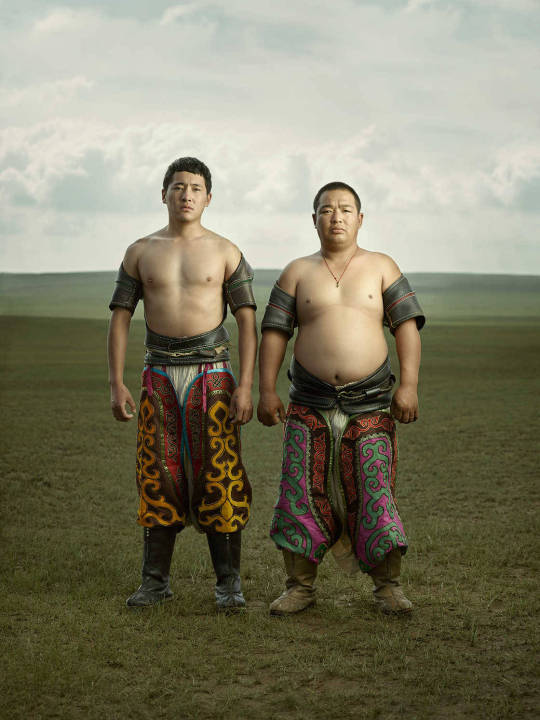
Mongol wrestlers, Mongolia, by Ken Hermann
#mongol#mongolia#asia#east asia#folk clothing#traditional clothing#traditional fashion#cultural clothing
506 notes
·
View notes
Text
My only defense of conceptual follower Benny is that he was a warrior nomad and a raider, that still has it in him if we take the All Roads comic into consideration, and how he is not like a real dainty soft hand city slicker, cause it’s mostly an act.
So in scenarios where he is forced to travel with the Courier I 100% think he’d be like “What do ya mean you can’t scale a mountain, pussycat? Watch how the pros do it.” And then you see him scuttle up a cliff face scarily fast only to have to save him when he bumps into a Cazador nest.
#reminder his ability stat is 6 and strength 7 so this guys moderately good at physical stuff#like in all realness military and raiders would have lower charisma and intelligence in fallout cause they may know basic stuff it’ would#usually only be for survival#cause what’s interesting about the tribes is that they are all raiders and copycats like yes they can be representative of indigenous tribe#of the wasteland it not of the culture of irl indigenous people as the game makes it clear they are just copying behavior they have heard#read or are just justifying their violent behavior cause the khans like literally read a book on the mongols and said we could bastardize#this and it’s not pointed out enough but it fits the themes of people misinterpreting the past#but back to Benny he’s like weirdly capable and I hate it but it is fascinating#he’d just be complaining other wise and then violently stab something and be like I kinda miss the old days#and then say ring a ding ding or some shit#courier six#the courier#Benny fnv#fallout new vegas#benny gecko#fallout#fnv#courier fnv
167 notes
·
View notes
Text




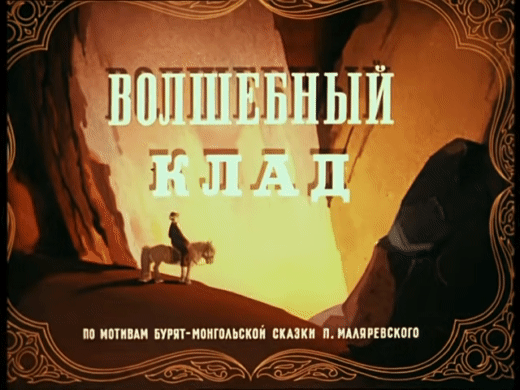
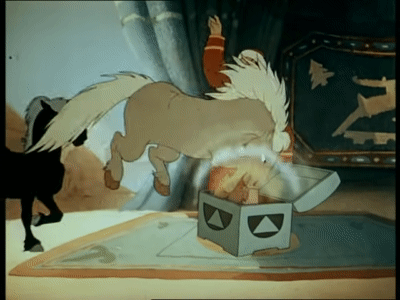
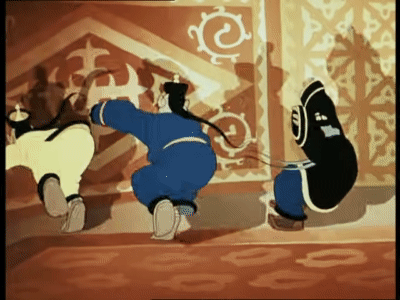


"Magic treasure". Волшебный клад. 1950
based on the Buryat-Mongolian folklore
по мотивам бурятско-монгольского фольклора
#mongolic#non-russian#indigenous russian#indigenous russia#Buryatia#Бурятия#Buryats culture#Культура Буряты#artist#cartoon#art
69 notes
·
View notes
Text

Yurt front door - Khiva, 2022
#original photographers#photographers on tumblr#travel#uzbekistan#ancient architecture#yurt#ger#mongol culture#mongol empire#architecture#streetphoto color
164 notes
·
View notes
Text

Dongxiang girl, China.
2 notes
·
View notes
Text
the pathologic Kin is largely fictionalized with a created language that takes from multiple sources to be its own, a cosmogony & spirituality that does not correlate to the faiths (mostly Tengrist & Buddhist) practiced by the peoples it takes inspirations from, has customs, mores and roles invented for the purposes of the game, and even just a style of dress that does not resemble any of these peoples', but it is fascinating looking into specifically to me the sigils and see where they come from... watch this:
P2 Layers glyphs take from the mongolian script:

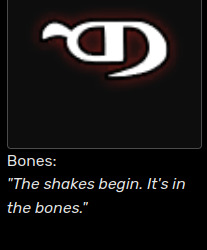

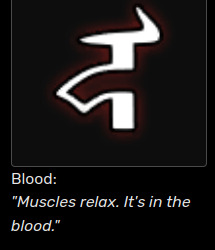

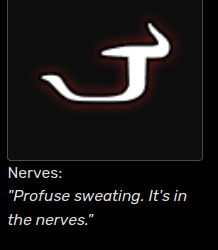


while the in-game words for Blood, Bones and Nerves are mongolian directly, it is interesting to note that their glyphs do not have a phonetic affiliation to the words (ex. the "Yas" layer of Bones having for glyph the equivalent of the letter F, the "Medrel" layer of Nerves having a glyph the equivalent of the letter È,...)
the leatherworks on the Kayura models', with their uses of angles and extending lines, remind me of the Phags Pa Script (used for Tibetan, Mongolian, Chineses, Uyghur language, and others)


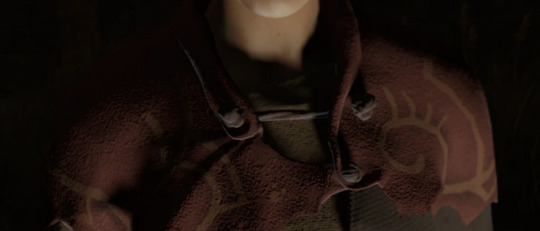
some of the sigils also look either in part or fully inspired by Phags Pa script letters...






some look closer to the mongolian or vagindra (buryat) script

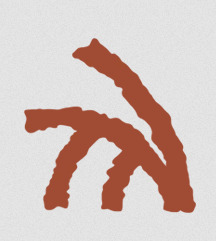
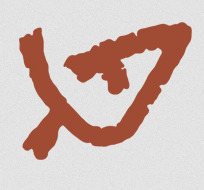

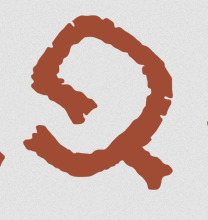
looking at the Herb Brides & their concept art, we can see bodypainting that looks like vertical buryat or mongolian script (oh hi (crossed out: Mark) Phags Pa script):
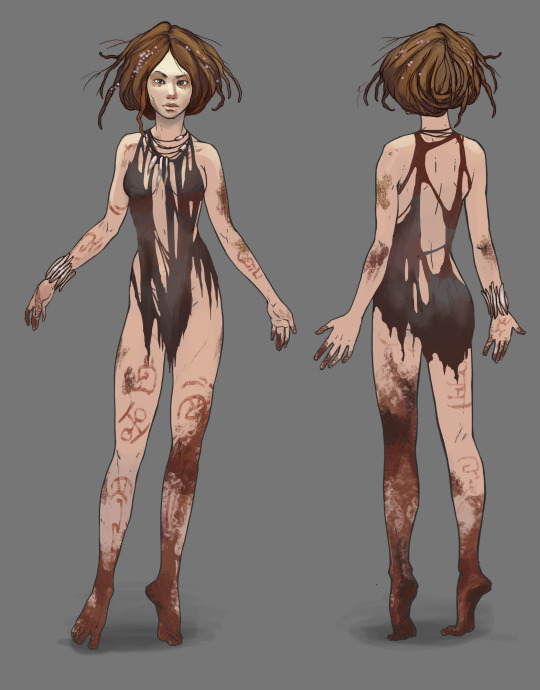
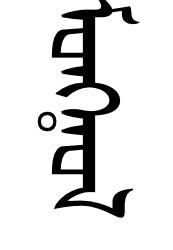
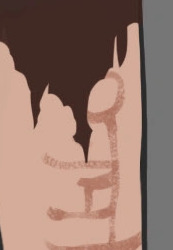
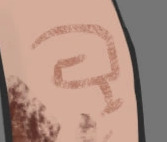

shaped and reshaped...
#not sure how much. what's the word. bond? involvement? not experience. closeness? anyone in the team has with any of these cultures#but i recall learning lead writer is indigenous in some way & heavily self-inserts as artemy [like. That's His Face used for#the p1 burakh portrait] so i imagine There Is some knowledge; if not first-hand at least in some other way#& i'm not in the team so i don't know how much Whatever is put into Anything#[ + i've ranted about the treatment of the brides Enough. enough i have]#so i don't have any ground to stand on wrt how i would feel about how these cultures are handled to make the Kin somewhat-hodgepodge.#there is recognizing it is Obviously inspired by real-life cultures [with the words;the alphabet;i look at Kayura i know what i see]#& recognizing it Also is. obviously and greatly imagined. not that weird for you know. a story.#like there is No Turkic/Altaic/Mongolic culture that has a caste of all-women spiritual dancers who place a great importance on nudity#as a reflection of the perfect world and do nothing but dance to bring about the harvest. ykwim...#like neither the Mongols nor the Buryats nor the Tibetans dress the way the Kin does. that's cos the Kin is invented. but they're invented.#.. on wide fundations. ykwim......#Tengrism has a Sky Deity (Tengri) with an earth-goddess *daughter* whereas the kin worship an Earth-Goddess mother of everything#+ a huge bull. Buddhism has its own complete cosmogony & beliefs which from the little I know Vastly Differ from anything the Kin believes#like. yeah. story. but also. [holds myself back from renting about the Brides again] shhh...#neigh (blabbers)#pathologic#pathologic 2
287 notes
·
View notes
Text
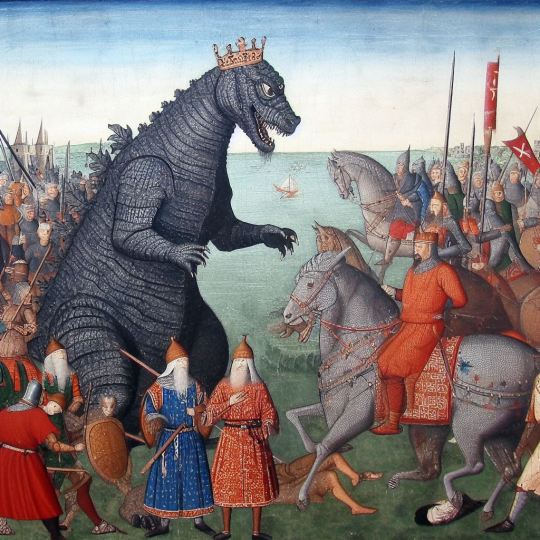
A medieval painting of Godzilla at the battle of Liegnitz in 1241, between the Mongol horde and European Knights.
93 notes
·
View notes